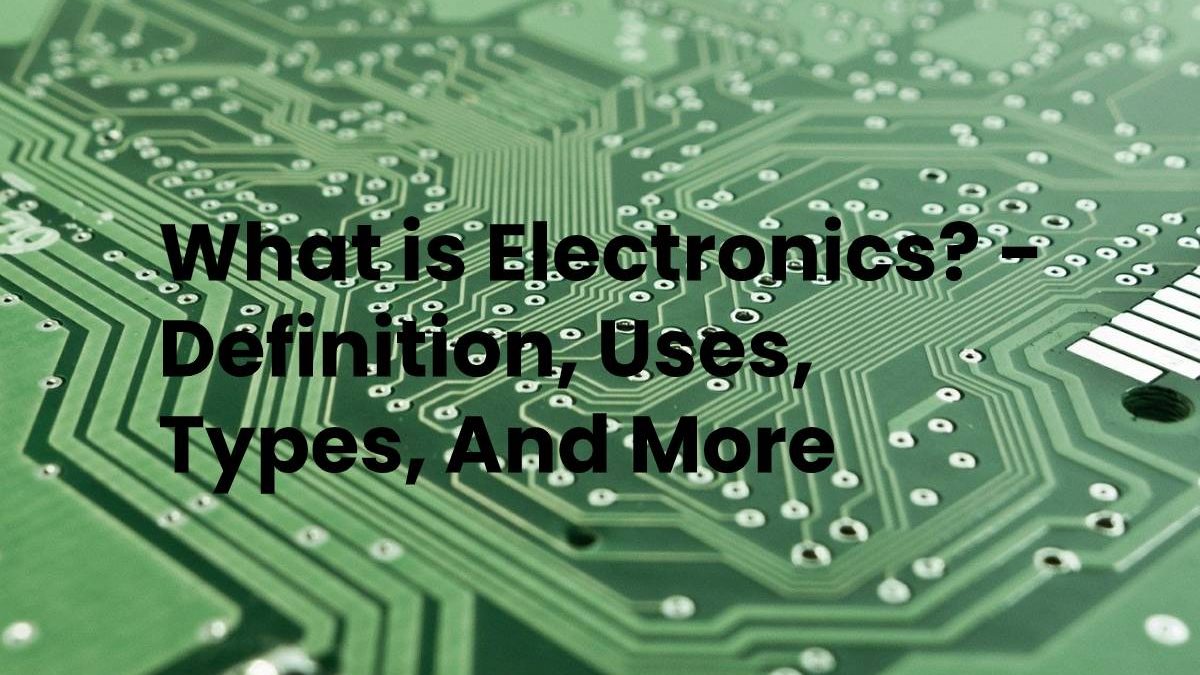Table of Contents
Definition Electronics
Electronics is a combination of technology physics, engineering, and applications that deal with the flow, emission, and control of electrons in matter and vacuum. Electronics are applicable in information processing, telecommunication, and signal processing.
It’s a Greek word that comes from the union of two differentiated lexical parts. Elektron that translates as “amber,” and the suffix -like that happens to mean “relative to.”
The analysis of electrons and the application of their principles in different contexts is known as electronics. The notion of electronics refers to what links to the electron, which is one of the essential particles of atoms.
Engineering and physics are responsible for the development and analysis of systems created by the movement. And control of electrons that have a charge of electricity.
Get industrial electronic equipment from ejawda.com
Electronic circuits
The so-called electronic circuits allow the conversion and distribution of electrical energy. So that they use to the processing and control of information. In general, we can say that an electronic system consists of sensors (which are also called inputs or transducers) that receive the physical signals and transform them into the current (voltage) messages.
The system circuits interpret and convert, in turn, the signals from the sensors that reach the actuators (or outputs). Which converts the voltage once again into physical signals, now useful.
Electronic signals
On the other hand, it can divide into two groups: analog (whose quantity of values is finite) or digital (which works with limited benefits).
Electronic music
The term at hand is also relevant to underline that it has given rise to the birth of a new type of art. More precisely, we are referring to the well-known electronic music that uses electronic instruments and technology.
Also read: What is Freelance? – Definition, Functions and More
Electric Appliances And Electronics (AAE)
Electrical and electronic devices (EEE) are all those devices that need to be powered by electric current or electromagnetic fields. Used with a nominal voltage not exceeding 1,000 V in alternating current and 1,500 V in direct current. And the devices necessary to generate, transmit and measure such currents and fields.
Currently, we regularly use a large number of such devices, which have become standard elements that accompany us in our day today. From large appliances such as refrigerators, washing machines or televisions, through game consoles or power tools, to mobile phones, smartphones, and tablets that we use regularly; They are all electrical and electronic devices.
Waste of Electrical and Electronic Devices
Once the life cycle of the devices ends, they become waste electrical and electronic equipment (WEEE). The pace of life and consumption habits in today’s developed societies have led to this type of waste growing at a rate three times higher than other urban solid waste such as glass, plastic, or cardboard. So they must be appropriately recycled to avoid their harmful effect on the environment and people’s health.
WEEE is always identified by this symbol, which indicates that they must be collected selectively to get channeled to the appropriate managers that guarantee their correct recycling in treatment plants.
Few useful electronic devices are Cellphones, Computers, Television, Radio, Refrigerator, multimedia equipment, fixed Tel, Inkjet printers etc.
Also read: What is Geometry? – Definition, Origin, Terms, and More

